3DB
Multi-Species Fishing Trips: A Late Summer Hard Bait Approach
Many fish species can be found throughout the water column during the late summer period. Panfish and predator species alike can be caught at or near the surface of the water column, hunkered down in thick vegetation or cruising weedlines adjacent to steep drops, or suspended over deep basins during this time of year. Having a variety of hardbaits that cover each level of the water column during late summer can improve the odds of catching several fish species in one fishing trip.
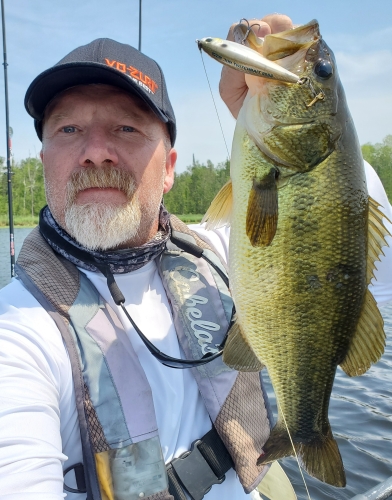
Surface
With so much bug life and baitfish congregating at or near the surface of the water column, late summer can be a great time of year to chase largemouth and smallmouth bass and northern pike using poppers. The Yo-Zuri 3DR-X Popper is a smaller profile lure at 2 5/8” and 1/4 oz. that works well during lowlight periods of the day, when the wind is under 5 miles per hour, and when fish are extremely finicky. The Bone or Ghost Prism Frog are solid patterns when fished within open pockets formed by lily pads and when chasing fish hunkered down in weeds during the heat of the day. Yo-Zuri 20 lb test SuperBraid is a top line choice when using the 3DR-X Poppers in and around weeds as it is strong enough to hold large bass or pike when they dive for thick cover as is often the case after a strike.
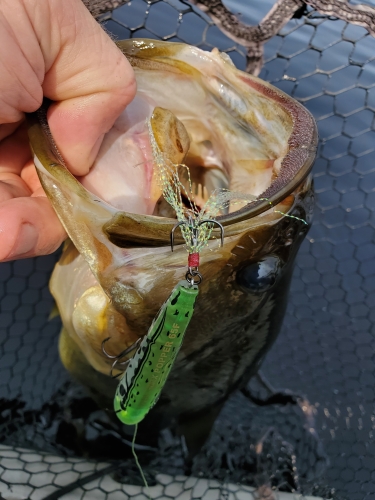
Mid-Depth
While many walleyes will shift their focus to deep humps, rock piles, and deep flats during late summer, there are inevitably going to be fish that frequent structure in less than 12’ of water as well. Larger walleyes will hunt in and around large cabbage patches where small perch, bluegills, and other minnows seek cover. At 4 3/8” and 1/2 oz., the 3DB Jerkbait 110 Deep is a hardbait that stands out among smaller forage that gets the attention of large walleyes waiting for an easy meal to pass in front of them. The Bold Table Rock Shad is arguably one of the most versatile patterns when fishing for walleyes in weeds as it can be effectively fished in clear or tannic-stained water. Changing up the cadence used from fast twitches to simply pulling the Jerkbait forward a few inches at a time allows the Yo-Zuri “Wave Motion Technology” to maximize vibrations that walleyes cannot resist.
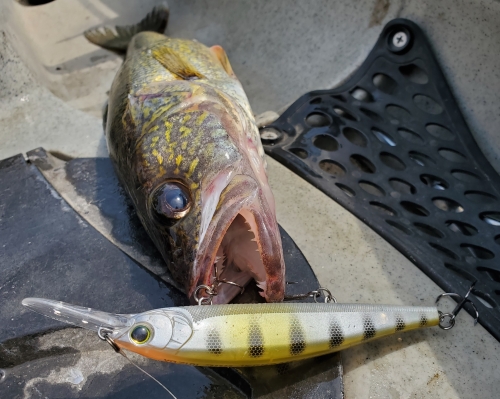
Deepwater
Although bluegills and crappies can be found in weeds and wood in late summer, this can also be a great time of year to pursue large schools of fish that suspend over deep water chasing smaller minnows and invertebrates. It is common to find marauding packs of panfish suspended 15-20’ down in 35’+ of water during this time of year. The Rattl’N Vibe, at 2 1/8” and 3/8 oz., is a large enough profile lure that sinks to suspended panfish quickly to maximize water covered effectively, but it is still small enough that big panfish will regularly eat it. Tying Yo-Zuri 6 lb test Hybrid line to the Vibe and then jigging, drifting, and trolling are all great options when pursuing suspended panfish. The Luminescent is a glow-based pattern that works regardless of water clarity and is an excellent choice early and late in the day when light is diminished.
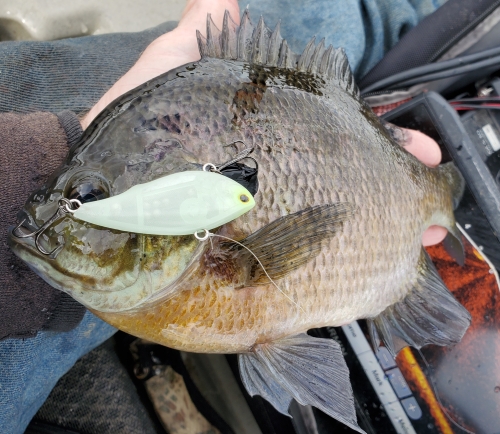
The late summer period can be a great time to chase multiple species of fish in the same trip. Coupling Yo-Zuri lines with the 3DR-X Popper, 3DB Jerkbait 110 Deep, and Rattl’N Vibe can give you the opportunity to maximize results during your next multi-species trip on the water.
Tight lines and be safe!
- Mark Maule
Crank Your Way To Suspended Late Summer Slabs
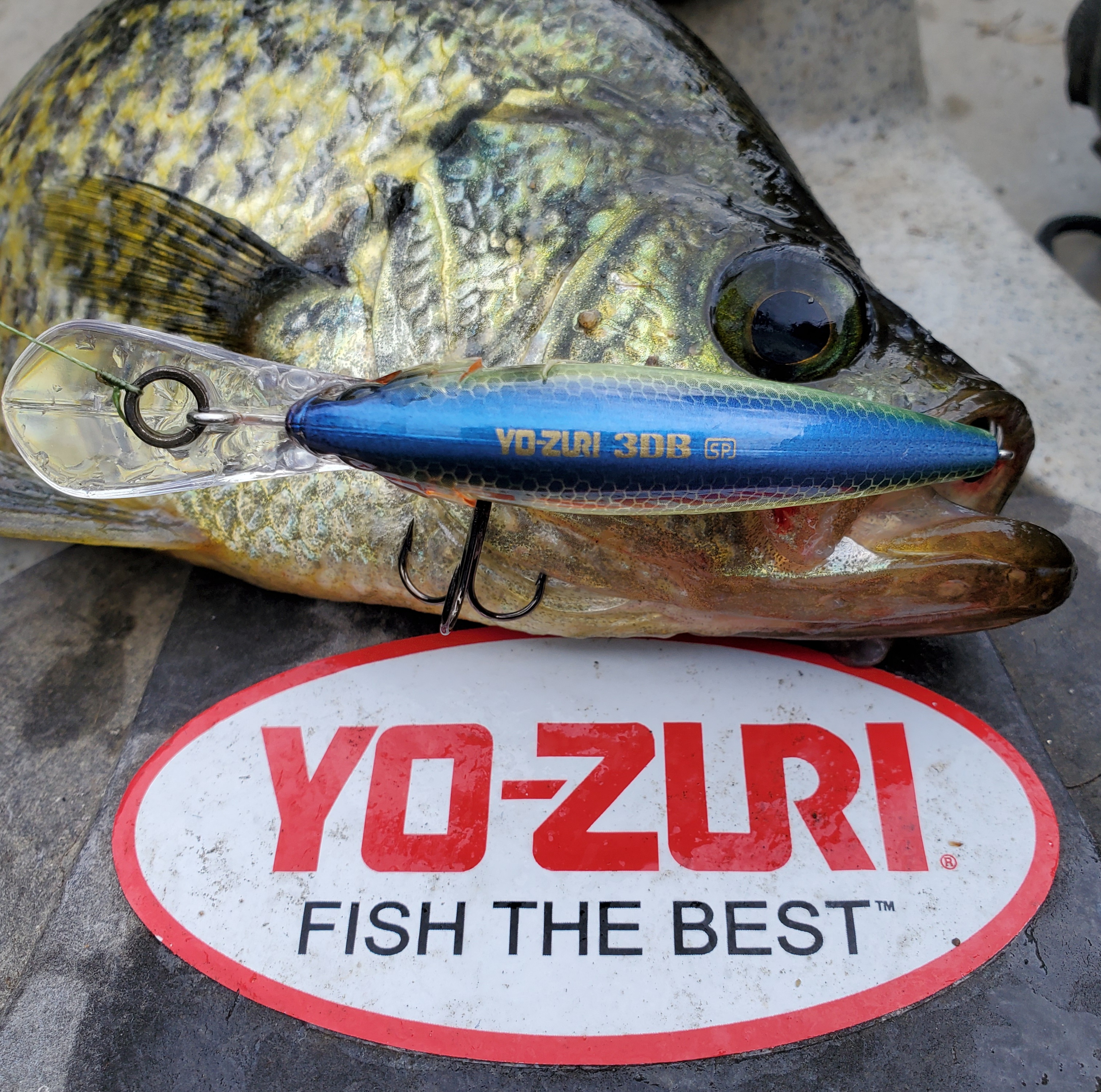 Crank Your Way To Suspended Late Summer Slabs
Crank Your Way To Suspended Late Summer Slabs
Mark Maule
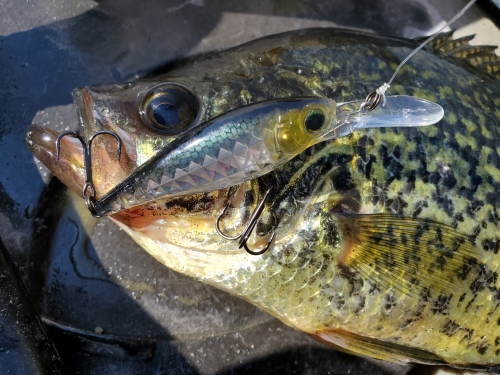
Bobbers, worms, tiny jigs and hooks, and flies are oftentimes associated with chasing
large panfish. However, summer is the time when big panfish, especially nomadic suspended
slab crappies, become hungry predators. The late summer period can be an especially effective
time to capitalize on their voracious appetites by using small crankbaits for fish suspending just
below the surface down to the thermocline.
3DR-X Shad
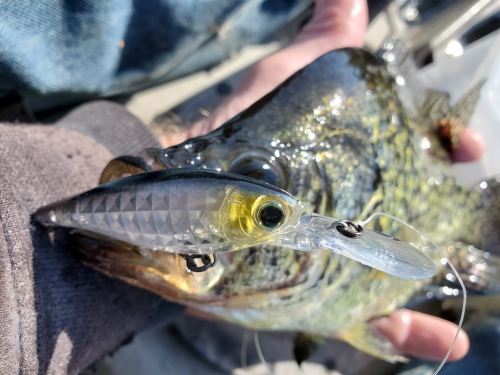
When big crappies are suspended within the first 5’ of the water column, the 3DR-X
Shad is a must. The 3DR-X Shad is a new 2 3/8”, 1/4 oz. suspending crankbait that can be
worked just under the surface of the water down to about 5’. It is an exceptionally versatile
small crankbait with an internal scale finish that perfectly mimics the minnows that crappies
feed on near the surface. It can be casted, trolled, or drifted effectively for shallow suspended
fish. Casting when conditions are calm, especially at dawn or dusk, can be a dynamite way to
fish the 3DR-X Shad when a more finesse-based approach is needed. When windier conditions
exist, trolling and drifting the 3DR-X Shad can be great ways to cover as much water as possible
to chase bigger crappies feeding near the surface.
3DB Shad
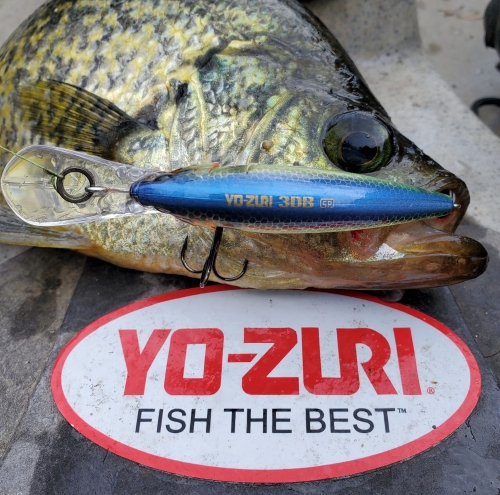
Depending on the conditions and where the forage is located, crappies will sometimes
be found a bit deeper as summer progresses. In these instances, it may be necessary to dig
down a little further in the water column to catch them when they are suspended. The 3DB
Shad is a 2 3/4” and 3/8 oz. lure that works well when chasing crappies that suspend 8-12’
down in the water column. This lure will dive to around 6’, which works great for mid-range
crappies as these fish are notorious for uphitting a lure. Fish over 12” will readily come up 4-6’
in the water column to chase down a larger meal during the late summer period. Trolling is
arguably one of the most effective ways to fish the 3DB Shad for big crappies in late summer. It
is a search bait that allows for covering a lot of water, and it elicits strikes from the most
aggressive bigger fish in a school when trolled quickly above them.
2 1/8” Rattl’N Vibe
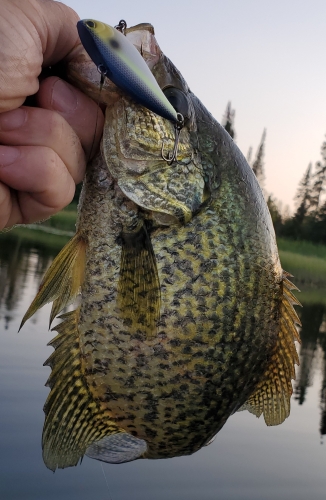
The 2 1/8” Rattl’N Vibe is a 3/8 oz. lipless crank that works great for situations where
crappies are suspended from 12’ down to the thermocline. This lure is large enough to sink to
the depths where the fish are located, yet, it is small enough so that larger crappies will still
readily feed on it without hesitation. Experimenting with the movement of the 2 1/8” Rattl’N
Vibe is key feature when fish are stationed more than 12’ down as it is possible to catch big
crappies by casting, trolling, drifting, and jigging. The key is to make sure that the lure is
constantly moving to resemble a struggling baitfish so fish instinctively attack it.
As the heat of summer progresses, choosing crankbaits that cover all areas of the water
column where fish are located can put some solid crappies in your livewell. Gear up with the
3DR-X Shad, 3DB Shad, or 2 1/8” Rattl’N Vibe, and get ready for some late summer slab action!
Stay safe and tight lines!
Watch as Mark Maule shows the guys from Midwest Outdoors how he uses the Rattlin' Vibe Mini on his Kayak for crappie and panfish:
<iframe width="560" height="315" src="; title="YouTube video player" frameborder="0" allow="accelerometer; autoplay; clipboard-write; encrypted-media; gyroscope; picture-in-picture" allowfullscreen></iframe>
Topwater Transitions for Bass from Spring to Fall
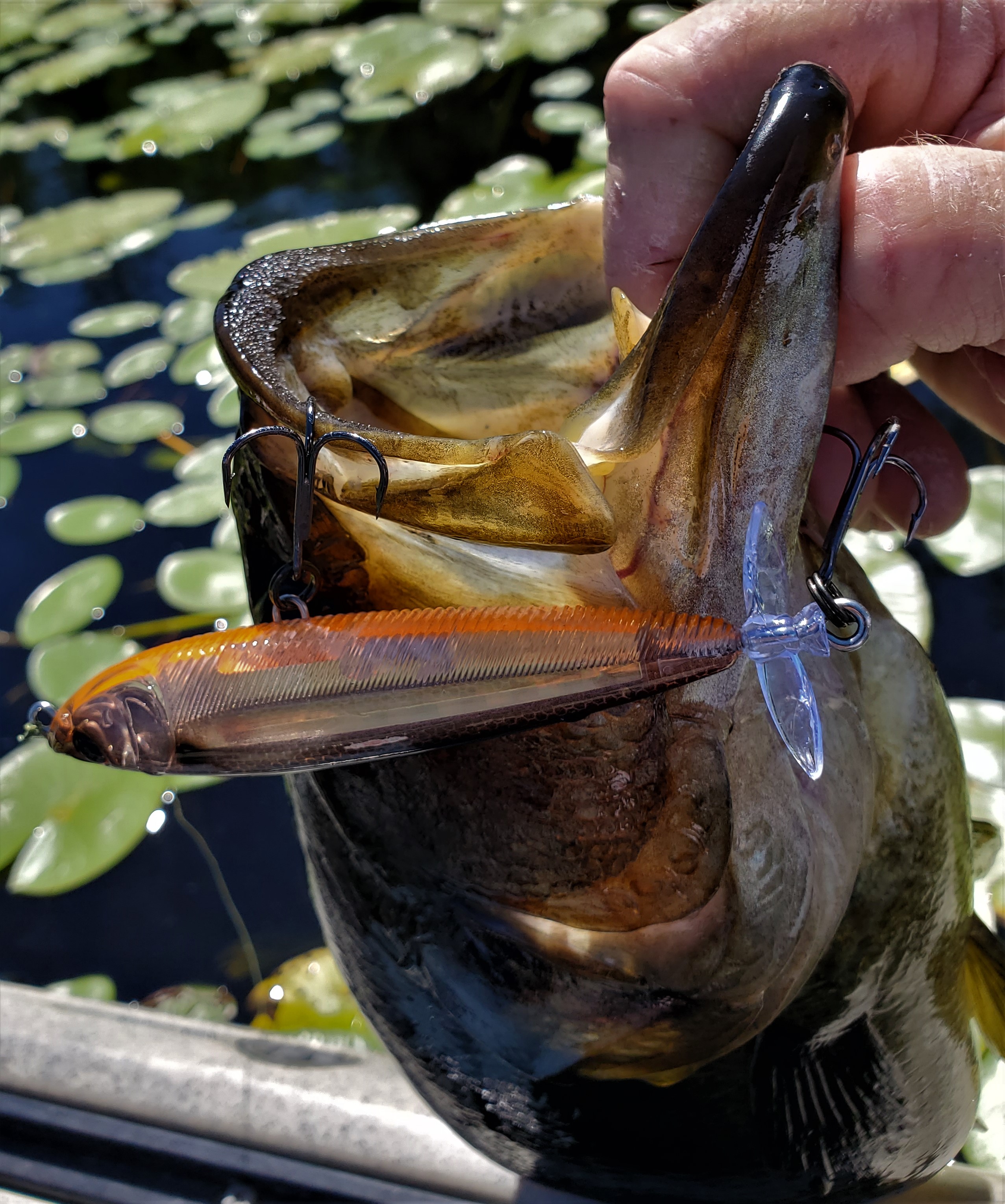 The changing of the seasons oftentimes makes it is necessary to modify fishing approaches in order improve fish catching opportunities. Like with any other lure type, changing up topwater presentations from spring through fall can lead to catching more bass as they shift their focus toward different types of prey and forage eaten with each of these seasons. Yo-Zuri hardbaits are a great option to consider for these necessary seasonal changes as they offer a host of different topwater lures and patterns to fit whatever situation with which the fish present us.
The changing of the seasons oftentimes makes it is necessary to modify fishing approaches in order improve fish catching opportunities. Like with any other lure type, changing up topwater presentations from spring through fall can lead to catching more bass as they shift their focus toward different types of prey and forage eaten with each of these seasons. Yo-Zuri hardbaits are a great option to consider for these necessary seasonal changes as they offer a host of different topwater lures and patterns to fit whatever situation with which the fish present us.
Spring
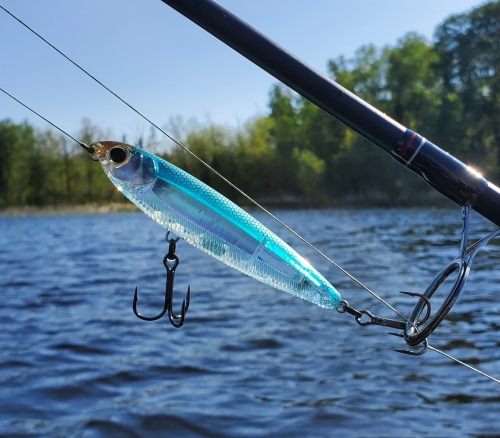
The Yo-Zuri 3DB Pencil is one of my favorite springtime lures as the fish are getting aggressive and ready to feed heavily after being hunkered down by several months of winter. These Pencils are big enough to get a fish’s attention as they prepare for the upcoming spawn, and they can be worked slow enough in the case that some fish might be more lethargic during cold front conditions. If the water and/or air temperature is lower than 50 degrees, I like going with a straight twitch and pause retrieve while using a 4” Pencil. Moving the lure 1-2’ at a time slowly forward and then pausing for up to 10 seconds can be highly effective. The pause is the key because that is when many fish will either strike or position themselves right under the lure to strike it when it starts moving again. After air and water temperatures supersede 50 degrees, then it is time to go with the classic “walk-the-dog” style retrieve where the lure moves from side to side while using a 5” Pencil. Warmer surface temperatures in spring can mean more and bigger minnows swimming in schools near the surface or in shallower bays, and when that happens, the aggressive nature of the side-to-side movement can elicit strikes because of predators already looking up and feeding on bigger active minnows.
Summer
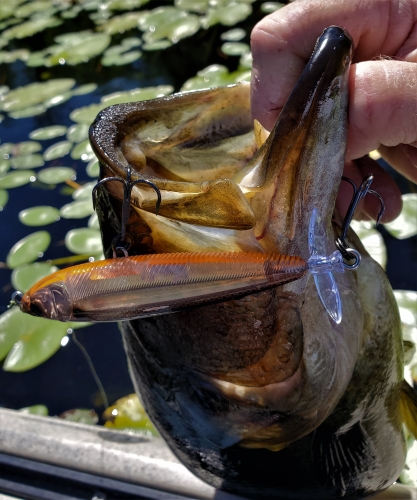
Once surface temperatures exceed the low 60s, we often see a significant increase in the amount of active bug life on the water. One specific insect that I look for during the summer months is dragonflies. When I see dragonflies, I switch from the Pencil to the Yo-Zuri 3DB Prop. The key to the Prop is that it has a plastic propeller which simulates the sound that a dragonfly makes when it is flapping its wings on top of the water. This lure can be used effectively from sunup to sundown, even when it is extremely sunny and calm, because of the presence of dragonflies. A general retrieve that I like to use is to cast the 3DB Prop parallel to emergent weeds that are adjacent to submergent vegetation and use a start-and-stop retrieve. I like to cast the lure, let it sit for 5-10 seconds so that fish can begin keying in on its silhouette right from the start of the cast, and then I go with anywhere from 1-4 cranks of the reel handle. The goal is to get the plastic prop to sound like a dragonfly’s wings flapping on the water, so sometimes reeling slower is necessary to make sure they can target the lure and eat it. Waiting to feel the fish’s weight during the strike will be paramount to improve the number of fish being hooked because simply going by sight might lead to pulling the lure away from the fish.
Fall
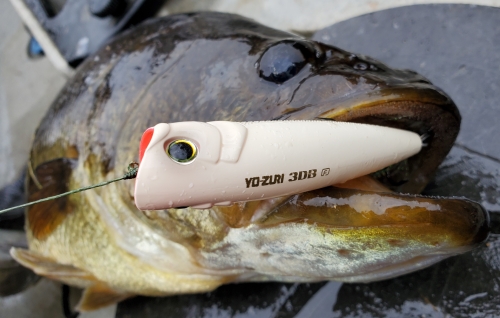
Fall is one of my favorite times of year to use topwaters as bass are hungry and feeding heavily in preparation for the upcoming long winter months ahead. The key to fall strategies for topwater lures is that I go by the first hard frost of the year versus when the calendar indicates the beginning of this season. Sometimes this happens in late August and sometimes it occurs in the at the end of September. My favorite way to pursue bass in the fall is with a Yo-Zuri 3DB Popper. I have found that using heavier line, like a 50 or even 65 lb braid, can be useful when tied directly to Poppers this time of year because I like to cast them right into any remaining emergent weed cover (even if it is dead due to frost) and retrieve it out over submergent weeds. Poppers work great in late fall as they offer a larger profile meal with little energy expenditure needed to chase them down. The Popper retrieve in fall is all about slowing things down and being patient. A cast usually entails letting the lure sit for up to 20 seconds or more after hitting the water, twitching the lure slowly 1-4 times so that it gurgles instead of splashes, and then pausing up to 20 seconds again. Using Poppers in late fall is often a case of the adage, “less is more,” when it comes to movement and noise on top of the water.
Being versatile with topwater hardbaits and adjusting the lure used based on the season can reap significant improvements in the numbers of fish that are landed. If you are looking for some exciting explosive bass action during the transitions from spring through fall, then casting an assortment of Yo-Zuri Pencils, Props, and Poppers is well worth your effort!
Mark Maule
Northern Summer Time Multi-Species Jerk Bait Fishing Techniques
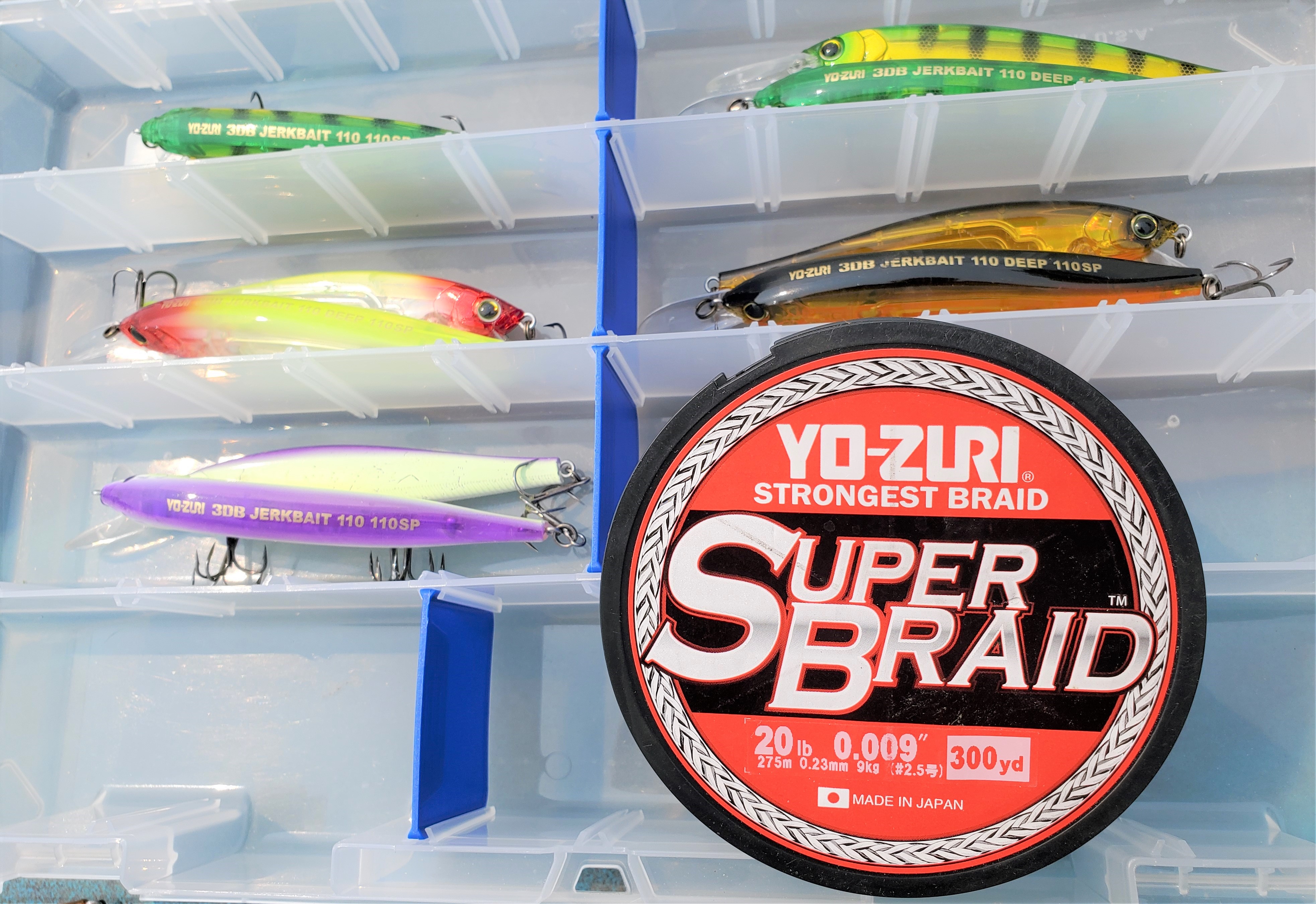 As the water temps reach and maintain their peak in mid to late summer, many anglers switch their presentation to live bait offerings or plastics to catch walleyes, largemouth bass, and northern pike. While these presentations absolutely catch fish during the dog days of summer, do not put away those hardbaits just yet as the 3DB Jerkbait 110 Deep can entice all predator species from their haunts throughout the summer months.
As the water temps reach and maintain their peak in mid to late summer, many anglers switch their presentation to live bait offerings or plastics to catch walleyes, largemouth bass, and northern pike. While these presentations absolutely catch fish during the dog days of summer, do not put away those hardbaits just yet as the 3DB Jerkbait 110 Deep can entice all predator species from their haunts throughout the summer months.
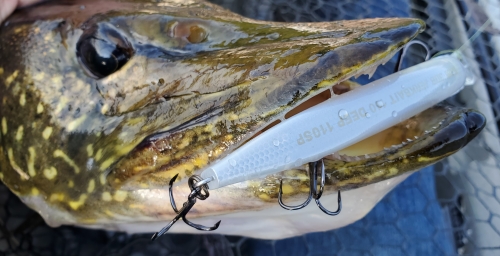
Lure: Yo-Zuri 3DB Jerkbait 110 Deep: At 4 3/8” and 1/2 oz., the Yo-Zuri 3DB Jerkbait 110 Deep can dive 8-12’ down in the water column. It is a superb choice for predator species as it is bigger than much of the young-of-the-year forage that is available in many bodies of water during the summer to late summer period. This is an important fact because the size difference the 110 Deep has from schools of 2-3” perch, for example, helps it stick out more and can lead to more hits when chasing walleyes, northern pike, or largemouth bass. The Yo-Zuri 3DB Jerkbait 110 Deep is great for use with long or short casts and its 3 treble hooks increase the percentage of hookups significantly once a fish bites.
Line: If you do not like using a leader when fishing, even when chasing northern pike over 30”, going with Yo-Zuri 20 lb Dark Green SuperBraid is an excellent option. This line is perfect when using the 3DB Jerkbait 110 Deep because its sensitivity allows for exceptional bite detection; it is abrasion resistant which is critical when fishing in and near weeds; and it can land fish well beyond the line test capacity listed on the spool.

Location: One of my favorite locations to fish for summer walleyes, northern pike, and largemouth bass is along and just inside weedlines in 8-12’ of water. This may sound shallow as a lot of fish move to deeper water when water temps reach 80 degrees, but the ones that stay in the densest weeds, are often the bigger and more aggressive fish which hunker down waiting for prey to pass in front of them. One of the keys to weedlines is to find more than one type of weed present. Cabbage mixed with grass, or even lily pads adjacent to grass or cabbage that are right at the first break into deeper water are prime spots. Once I have found these kinds of scenarios in a lake, regardless of the air or water temp or even time of day, I cast the 110 Deep parallel to the weedline and just inside the weedline to prompt strikes. If you are connecting with weeds every 3 or 4 casts, then you are casting where the bigger fish often lie in wait.
Retrieve/Cadence: When using the 3DB Jerkbait 110 Deep, I usually go with a qualitative and quantitative approach to the casts. When I cast it out, I wait for 3-5 seconds before beginning my retrieve. Then going with 1-4 twitches/jerks so that the lure moves 3-4’ forward and suspends is ideal. One wrinkle that I like to throw in the mix is to also crank the reel handle hard 1-4 times or gently pull the lure forward with 1 longer sweeping movement. Varying up the number of times the 110 Deep is moved as well as HOW it is moved can elicit some explosive strikes from any freshwater predator.
If you are looking for a “go-to” lure when chasing walleyes, northern pike, or largemouth bass around weedlines throughout the summer, then the Yo-Zuri 3DB Jerkbait 110 Deep is a top-notch choice to include in your gear box.
Tight lines and safe fishing!
Late Spring Topwater: Dustin Wilks
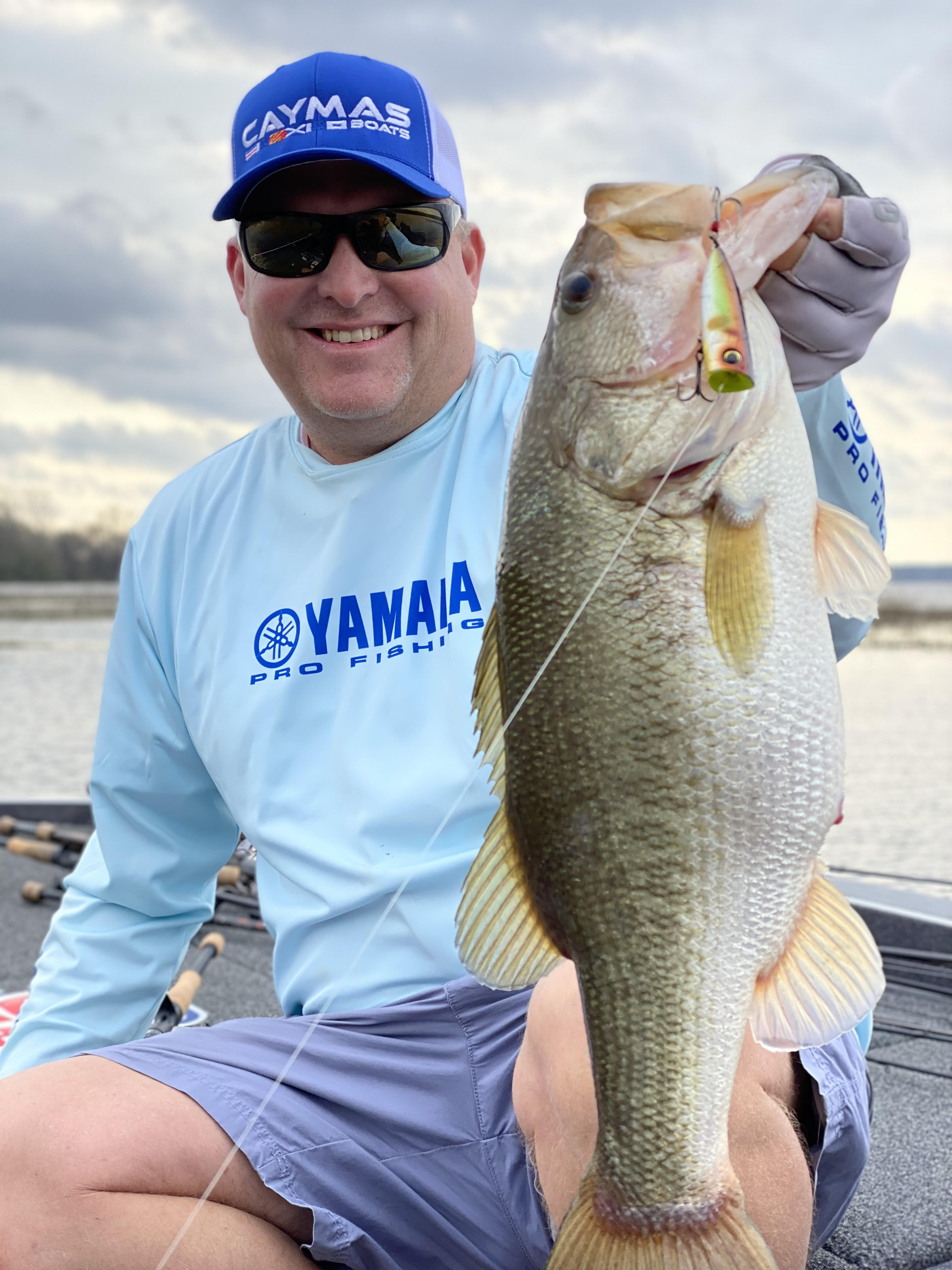
Topwater is the most fun of all fishing techniques. A bass eating a topwater with a sudden explosion is what it is all about. It is not only fun, it is also a great way to catch big fish.
In the late spring, a bunch of stuff is going on. There are bass still spawning, some guarding fry, some all done, and then there is the shad and blueback herring spawn. All of these scenarios are great for topwater making late April and all of May excellent for topwater.
Here I’ll briefly go through the ideal bait for each situation.
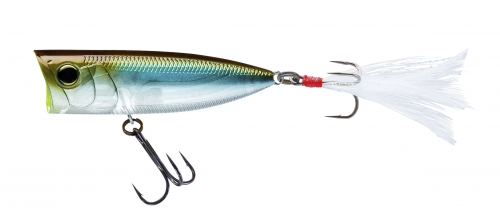
Spawning — The Hardcore Popper as a really tight walking action with tight twitches of the rod. It does not move very far forward on any given twitch. This makes bass on the bed really mad and explode on it. I’ve already caught some of my biggest bass this year on this bait. Remember to quickly release these bass, this is not the time to put them in the live well and show them off to your buddies, they need to lay those eggs.
Guarding Fry — Most of the time it is just the male bass still guarding the babies after they hatch, but every once in a while both bass will guard them or a large male. My favorite here is the Yo-Zuri 3DB Prop. This bait rips the surface looking like a something that is eating those fry — it drives them crazy and they eat it. Poppers work here too.
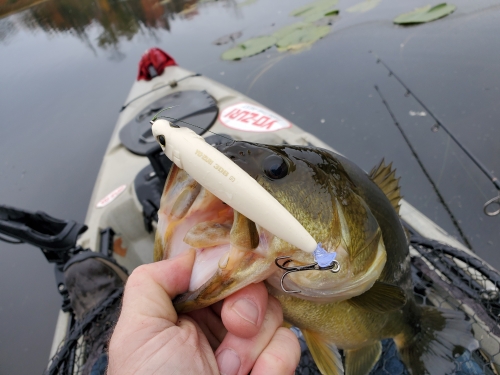
Feeding bass — The Yo-Zuri 3DB Popper. It has an extended body at 3″— a little longer than most poppers and has a nice fast walking action or you can just pop it along. I like to walk it, for fish outside of spawning pockets, typically on the first adjacent point or heavier cover is where you will find them when they first leave the nest.
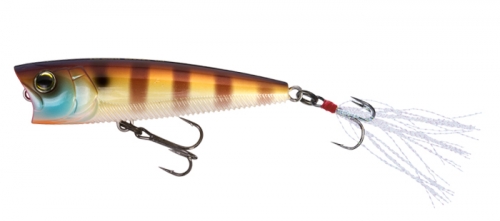
The Shad Spawn — This is where the traditional walking baits are best. The Yo-Zuri 3DB Pencil in both 4 and 5 inch. The standard Pencil is my favorite for the shad spawn because Shad are not as fast as Blueback herring. Fish this bait early in the morning on rocky banks or clay banks, beside bushes, or floating docks and Marina’s. This does not last long, so be on the water early. I like the 5’’ when I’m specifically looking for bigger fish. The 4’’ Pencil is my most consistent topwater bait in my box. I like Bone or shad colors in this situation. If the water is really clear, some of the new colors like gizzard shad are exceptional at tricking the bass.
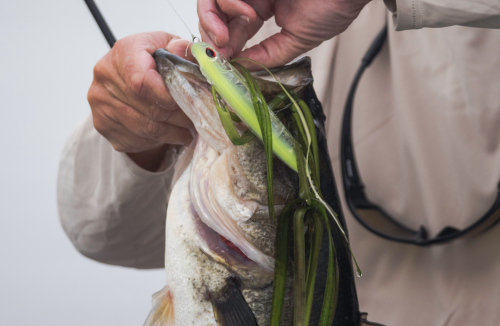
The Blueback Spawn. In many lakes in the Southeast U.S., Blueback herring are the dominant prey and bass have a distinct craving for these apparently tasty treats. Bluebacks are notorious for spawning on very shallow points and shoals. Long casts are often key. The Yo-Zuri 3DB Pencil Popper gets the nod here, though I mix it up with 4’’ Pencil and a soft jerk bait. The key to the Pencil Popper is it casts like a bullet, any schooling action can be met with a precise cast and a bait that not only looks natural, but has a really quick walking action. Bluebacks swim faster than shad, so use a faster retrieve.
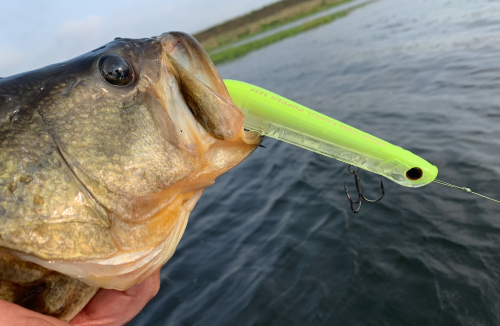
This Spring, get geared up with these great baits for some serious topwater fun!
Throw The Knuckle For A Great Change-Up- by Mark Maule
With August rapidly approaching, many larger northern pike have retreated to deep water weeds, deeper rock piles, or roam the basin in some cases chasing schools of baitfish. During this time, many anglers put away their northern pike gear because it can be more challenging to catch bigger fish than it is during the spring and fall seasons. However, if you can find the fish, they can be caught. One of my favorite lures to fish large northern pike during late July and throughout August is the Yo-Zuri 3DB Knuckle Bait.
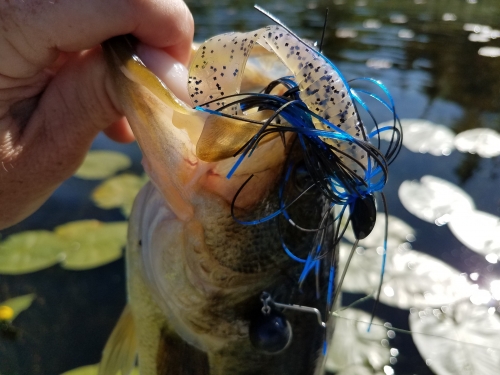
At 1/4, 1/2, and 5/8 oz. the Yo-Zuri 3DB Knuckle Bait can effectively be fished throughout the water column. The 1/4 oz. Knuckle is a perfect choice when fishing in water up to about 10’ above downed wood, right at the edge of weeds that drop into deeper water, or off of long points. The 1/2 oz. and 5/8 oz. Knuckle Baits are a great choice when fishing in water from 10-20’ deep while working the edge of weedlines and sharp drops or humps. The 5/8 oz. Knuckle Bait can also be a great option when pursuing large fish in the 15-25’ range over basins when they are chasing schools of baitfish.

Two of my favorite colors regardless of how deep I am fishing are the Golden Shiner and Tennessee Shad. The Golden Shiner 3DB Knuckle Bait is perfect for tannic or dirty water and the Tennessee Shad is an excellent choice for clear water conditions where the sun is high in the sky. With each pattern, it is recommended to use some kind of trailer. Normally, I go with a 4” or 5” plastic grub that emulates baitfish that are in the system. So, for example, when fishing the Golden Shiner Knuckle Bait, I might choose a grub that has some chartreuse and orange flecks in it because it mimics a bluegill that northern pike will be feeding on in weeds. When using the Tennessee Shad Knuckle Bait, I might go with a pearl or white grub to try for basin fish because these colors look like tullibees that northern pike might be chasing.
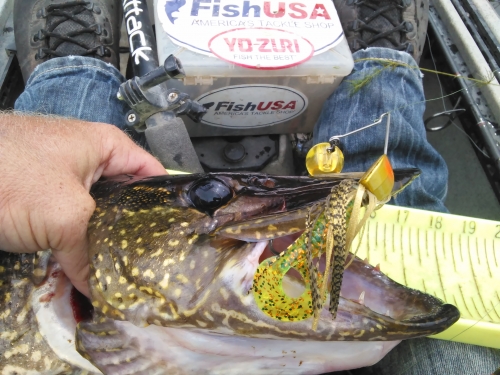
Fishing for large northern pike during summer can be daunting at times, but they can still be caught with relative frequency. Throwing the Knuckle as a change-up to patterns used in spring and fall can be a terrific way to keep you on the numbers and good-sized fish.
Post Spawn Big Bass “Wake” Up!- Mark Maule
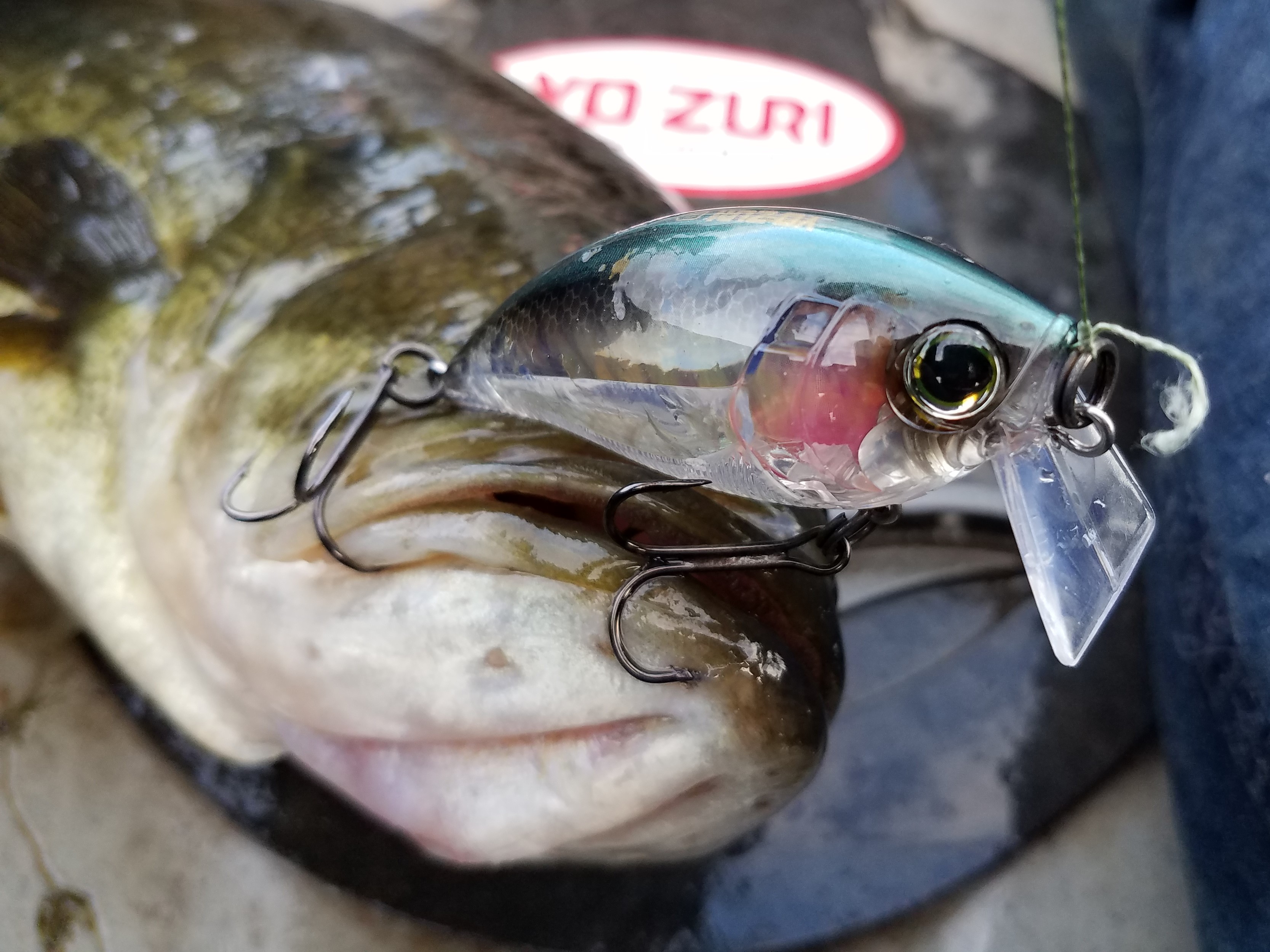 Have you ever had one of those mornings where you just don’t want to wake up or get out of bed? Of course! We have all had that experience at some time. During the immediate post spawn period, it can seem like the big bass in a lake have one of those mornings for an entire week. However, even when they are lethargic and not feeding heavily as can be the case in the immediate post spawn period, there are still some opportunities to “Wake” them up and get them to bite.
Have you ever had one of those mornings where you just don’t want to wake up or get out of bed? Of course! We have all had that experience at some time. During the immediate post spawn period, it can seem like the big bass in a lake have one of those mornings for an entire week. However, even when they are lethargic and not feeding heavily as can be the case in the immediate post spawn period, there are still some opportunities to “Wake” them up and get them to bite.
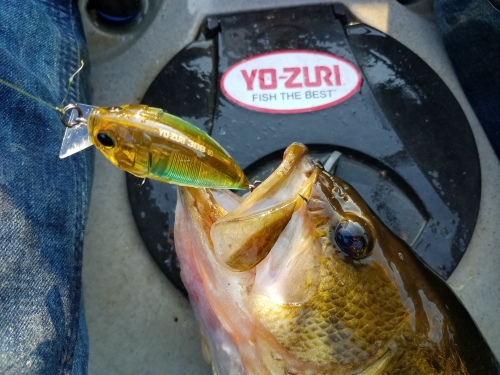
One of my favorite lures during this transitional phase is the Yo-Zuri 3DB Wake Bait. At 2.75”, this lure has a solid tight wobbling motion. Like other Yo-Zuri products, the 3DB Wake Bait has a rattle that can draw fish in from a long way off. The Yo-Zuri 3DB Wake Bait can be fished right beneath the surface leaving disrupted water behind it as it is reeled in, or it can be fished effectively up to about 1.5’ below the top of the water.
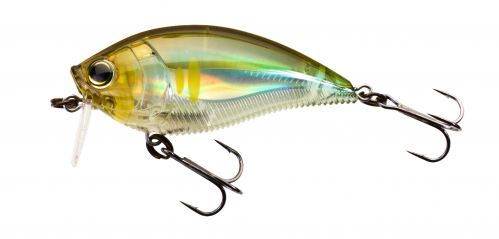
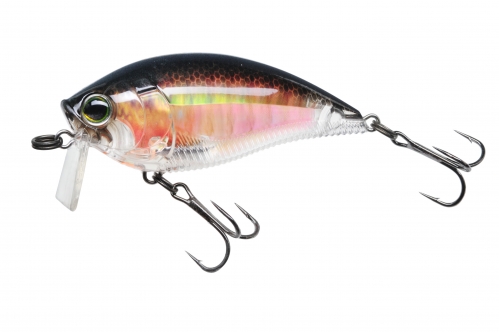
Using the 3DB Wake Bait during the post spawn can be especially effective early in the morning or late in the day when the sun is lower. Add some wind up to about 5 mph hour, and this lure can be cranked for bass on any given lake. The Prism Ayu is one of my favorite colors during the immediate post spawn for bass because it emulates the baitfish that the fish are feeding on or will be feeding on soon and elicits reaction strikes. Prism Ayu is a great pattern choice to use in clear water especially as bass will come to the surface from 15’ down to engulf this lure as the cadence is changed with every crank of the reel handle. Generally speaking, I start in 3-6’ of water when using the 3DB Wake Bait, and then work my way out deeper if necessary. Another alternative in cloudy conditions during the Bluegill spawn is the same size of Yo-Zuri Wakebait in the 3DR series is the Real Bluegill.
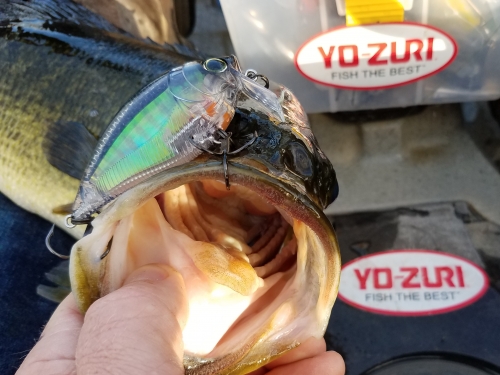
So if you are facing some cranky bass right after the post spawn that don’t seem to want to move, much less eat a bait, “Wake” them up with the Yo-Zuri 3B Wake Bait.
Spring is Coming and that Means….OPEN WATER!!!
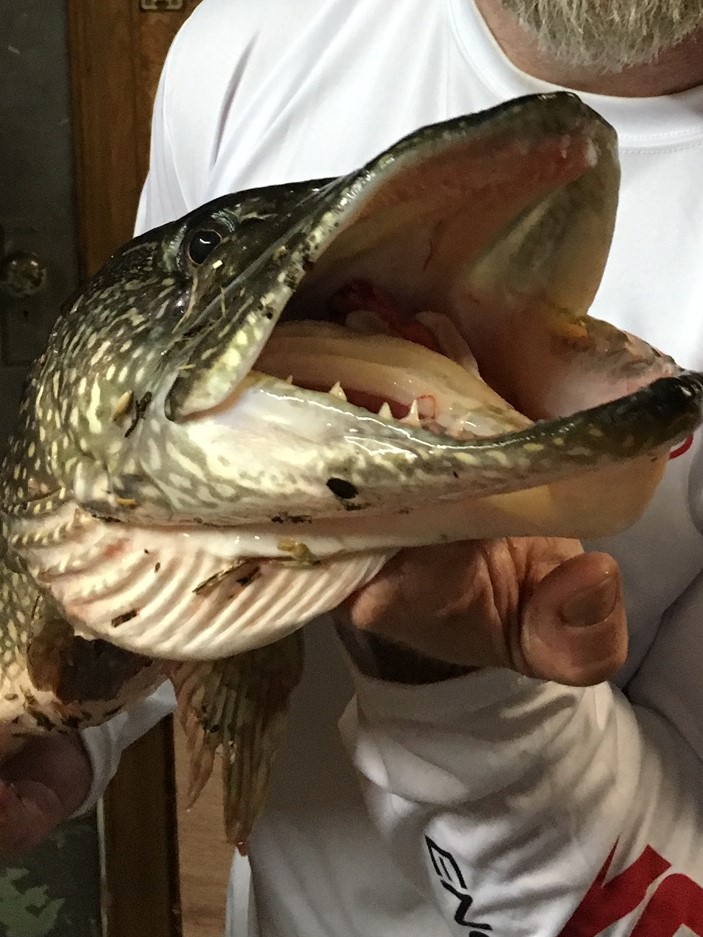 One of the best times of year to catch Northern Pike is in the post-spawn and early spring when water temperatures warm to 45-55 degrees. The post-spawn and early spring is one of those special times of the year when you can land some of the largest Northern Pike of the open water season. Gold, Silver, and Bronze Yo-Zuri hard baits are all Olympic winners when chasing big Pike during this time.
One of the best times of year to catch Northern Pike is in the post-spawn and early spring when water temperatures warm to 45-55 degrees. The post-spawn and early spring is one of those special times of the year when you can land some of the largest Northern Pike of the open water season. Gold, Silver, and Bronze Yo-Zuri hard baits are all Olympic winners when chasing big Pike during this time.
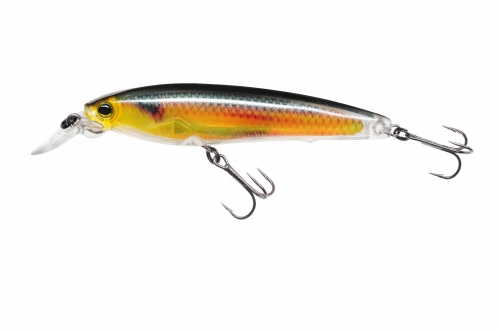
Gold: One of my favorite “go-to” lures during the post-spawn and early spring for Northern Pike is the Yo-Zuri Golden Shiner 3DR Jerkbait. The Jerkbait is a lure that that works especially well for Northern Pike during this time of year because it can be effectively twitched in 2-5’ of water which they often frequent. Old bulrushes, rock and sand points, and shallow bays are all prime spots to try with the 3DR Jerkbait.
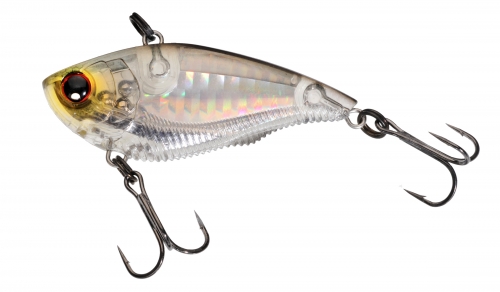
Silver: Another great option during the post-spawn and early spring for large Northern Pike is the Yo-Zuri Prism Silver Black 3DB Vibe. The Prism Silver Black Vibe works great when fished with a sporadic cadence along the first drop-off in a lake. The drop-off approach with the Vibe gives large Northern Pike a perfect vantage point for ambushing bait with minimal effort to feed. Ideally, I look for drop-offs in the 5-8’ range so that I can let the lure sink as needed to generate reaction strikes. It may be necessary to go this route when fish are lethargic and not yet feeding heavily due to recent spawning activity.
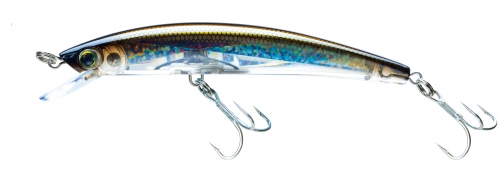
Bronze: The last lure choice that I want to discuss which I rely on for large post-spawn and early spring Northern Pike is the 4 3/8” Yo-Zuri Holographic Bronze Shiner Crystal Minnow (Floating or Suspending). One of my favorite ways to fish the Holographic Bronze Shiner Crystal Minnow is to use it as a search bait via trolling. When trolling the Crystal Minnow from my kayak, I change paddling speeds frequently and twitch the rod occasionally to emulate an injured or dying baitfish. Trolling with the Yo-Zuri Crystal Minnow works great on flats as shallow as 4’, the first drop-off from a bay, and points that drop into 10’ or more of water.
Choosing a Yo-Zuri Jerkbait, Vibe, or Crystal Minnow can be a great way to increase your odds of catching more fish. Go for the Gold, Silver, or Bronze during the post-spawn and early spring and you may end up netting your largest pike of the open water season.
FLW Tour Lake Toho Top-20 Finish Recap- by Mike Surman
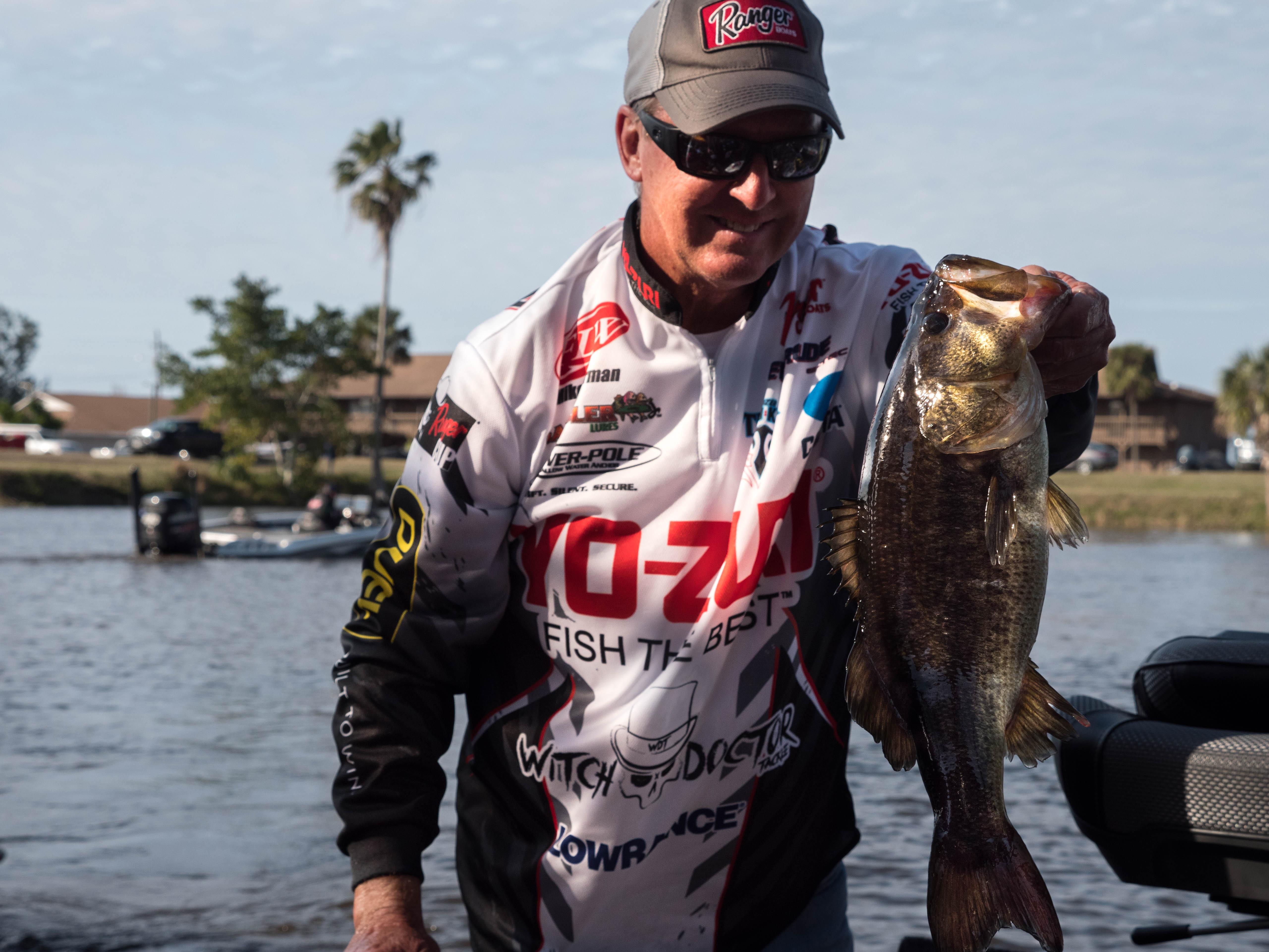 The older I get in this sport the more a good finish means to me. With the changing technology, industry curves, and constant new talent making their way into the tour level; the harder it is for me compete against fellow anglers. However this past weekend in my current home state of Florida at Lake Toho, Mickey Mouse must have given me a little magic being so close to Disney World because everything came together.
The older I get in this sport the more a good finish means to me. With the changing technology, industry curves, and constant new talent making their way into the tour level; the harder it is for me compete against fellow anglers. However this past weekend in my current home state of Florida at Lake Toho, Mickey Mouse must have given me a little magic being so close to Disney World because everything came together.
The fishing in Florida has been really off so far this year. Between the low water in all the lakes, the Red Tide issues the entire state faced last year, and it still being early in the year the best fishing is still yet to come. This last week I was really able to pinpoint a good amount of fish that were pre-spawning and spawning. I used my local knowledge of the lake to lock into Lake Kissimmee and fish staging areas leading into spawning areas with good, healthy grass around it. With water temperatures in the mid-60s I knew as the week processed the fish would continue to move up.
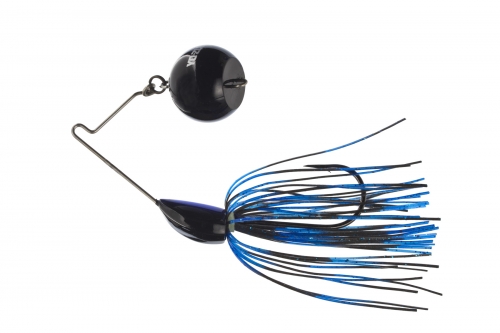
In practice I was really able to capitalize on a morning pattern and then an afternoon pattern, a key to my success knowing I could stay calm throughout the day and capitalize on the different patterns when they were at their best. In the mornings I was catching fishing on a 1/4oz Black and Blue 3DB Knucklebait with a soft plastic swimbait trailer. I was able to catch a couple really good fish on this and thought it would be a key bait for me throughout the tournament. I was throwing the Knucklebait over submerged grass around staging areas. As the afternoon took place and the sun got high I was able to pitch to hydrilla mats and dollar pads with a soft plastic stickworm catching spawning fish.
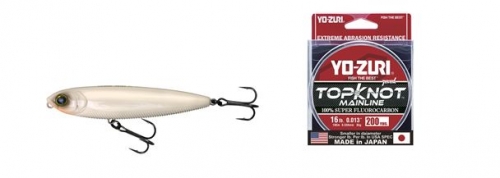
In the tournament, the morning Knucklebait bite had died but I was still able to capitalize catching these same fish using a 3DB Pencil in Bone color. For this technique I was throwing 20lb Yo-Zuri Hybrid line, and I was making short casts with it. I think the bait has better action when making shorter casts and not having so much stretch in the line. In the afternoons I was able to again capitalize again on the plastic stickworm bite. I was fishing the worm on a little [1/16oz] weight and throwing it on 16lb Yo-Zuri TopKnot Mainline Fluorocarbon.
One of the last factors that helped me was covering water in an area. I was fishing a massive area of Lake Kissimmee and it seemed like covering water and then breaking down an area once I got a bite was the key to capitalizing on water holding fish.
“Sending Good “Vibes” To Lure In Mid-Winter Northern Pike and Walleyes”- by Mark Maule
As the ice thickens, snow accumulates on top of it, and fish have seen just about every bait imaginable offered by ice anglers in northern states, catching walleyes and northern pike can become a bit more of a task in mid-winter than at first ice. By the middle of January through early February fish have become more lethargic, and in many cases are reluctant to chase down bait than they were earlier in the year. However, this is no reason to put away your noisemakers that have worked throughout the open water and early winter ice fishing season! The 3DB Vibe can be a great lure which creates a disturbance in the water that can be used in more way than one catch walleyes and northern pike in mid-winter.
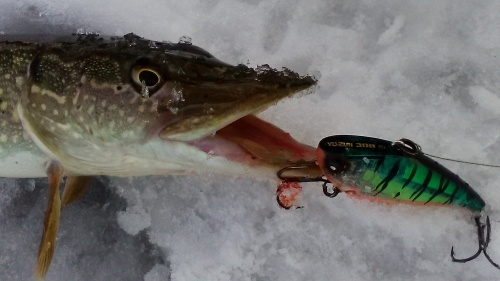
The Yo-Zuri 3DB Prism Fire Tiger Vibe is probably my most versatile lure that I use on lakes where perch is the forage species for northern pike and walleyes. Like in open water, it can be used effectively throughout the ice season to catch fish. The first way that I employ the 3DB Vibe is to rip it through the water column, making as much noise as possible and trying to get a reaction strike. This approach with the Vibe through the ice is great in mid-winter wherever the first big drop-off is in the lake. Usually, I look for quick transitions from 12 feet down to 18 feet or more and set up right in the middle of the transition. In this scenario, the goal is to catch fish that are moving up breaks and transitions before they get to the flats at dusk to feed on forage species.
While rapidly ripping, jigging, and swimming the 3DB Vibe can be a great way to catch some northern pike and walleyes in mid-winter that are cruising drop-offs, there are time when I simply use it as a decoy to draw fish in from a long way off. Even the most finicky of fish can be drawn into the area to investigate all of the commotion caused by the 3DB Vibe. When fish approach while pulling the Vibe through the water, but will not strike it directly in mid-winter, I employ a second Yo-Zuri product, the Snap Bean tipped with a fathead minnow only a few feet away under a slip bobber at the same depth that I am jigging the 3DB Vibe. What happens is that northern pike and walleyes will come cruising right up to the Yo-Zuri 3DB Vibe to investigate, see the Snap Bean setup, and will leave the Vibe to catch the easier smaller meal with the Snap Bean and minnow. In this case, the Vibe is used just to get the fish’s attention, and the Snap Bean tipped with a minnow is what seals the deal. In this scenario, I move to the top of the flats in 8-11 feet of water as the focus is less on reaction and more on catering to feeding fish after dusk.
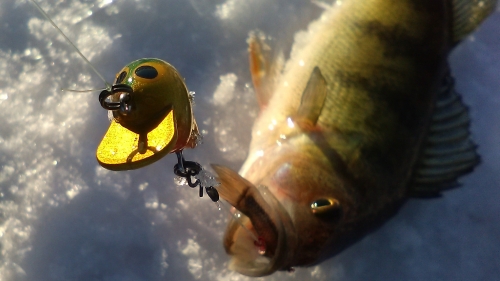
Whether you are using the Yo-Zuri 3DB Vibe to get fish to bite it directly, or you are using it as a decoy to draw in finicky fish from a distance so that they bite a Yo-Zuri Snap Bean tipped with a fathead minnow, the Yo-Zuri 3DB Vibe is a top-notch choice that can keep catching fish for you throughout the mid-winter ice season.
